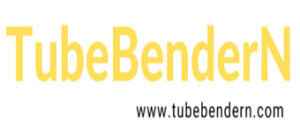Things You Must Know about Aluminum Tube Bending
- What Is the Common Aluminum Tube Forming Methods?
- Is Aluminum Tube Bendable?
- Factors Affecting Aluminum Tube Bending
- Bending Performance of Different Aluminum Tube Grades
- The Right Equipment for Aluminum Tube Bending
- How to Bend Aluminum Tubing?
- The Difference Between Aluminum Square Tube Bending and Aluminum Round Tube Bending
- Surface Treatments for Bent Aluminum Tubing
- Key Considerations Before Bend Aluminum Tube
- Common Issues When Bend Aluminum Tube
- The Application of Bent Aluminum Tubing
Aluminum tube bending is a very important technology and process for forming the aluminum tube into various shapes and then used for different applications. Bending aluminum tubing can not only be processed on round pipes but also square tubes, rectangular tubes, and aluminum profiles.
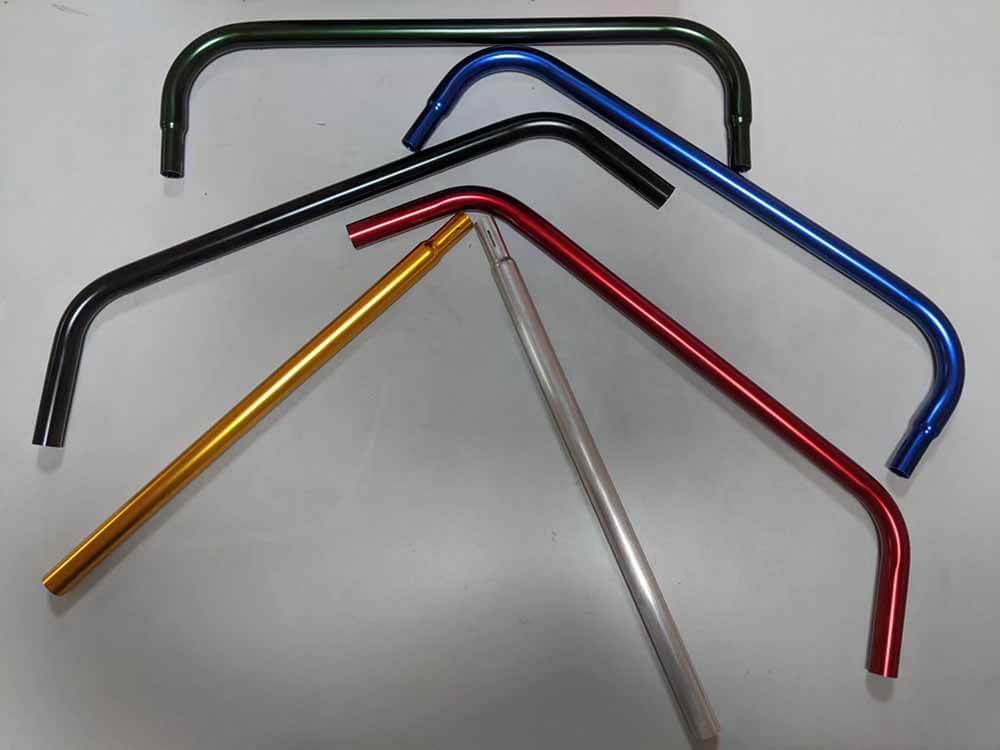
What Are the Common Aluminum Tube Forming Methods?
Do you know what are the main forming processes for aluminum tubes on the market? There are several aluminum tube forming processes on the market, but there are two most common ones. They are Aluminum Extrusion Tube and Aluminum Drawn Tube.
What is Aluminum Extrusion Tube?
Aluminum extrusion tube, also commonly referred to as a seamed aluminum tube, is produced by heating solid aluminum rods until softened and then extruding them through molds in an aluminum extrusion machine to form the desired shape. This process is well-suited for high-volume production and allows for customization of various shapes and sizes.
What is Aluminum Drawn Tube?
Aluminum drawn tube, also commonly referred to as a seamless aluminum tube, is produced by softening aluminum rods, then piercing the center with a mandrel, and subsequently rolling it out, this results in a seamless aluminum tube. Seamless aluminum tubes have higher strength and precision compared to extruded aluminum tubes. They are typically used for making smaller diameter tubes, with shapes such as round, square, rectangular, etc.
Is Aluminum Tube Bendable?
Yes, aluminum tube is bendable. The difference lies in that some aluminum tubes are relatively soft, making them easy to bend, while others are harder, making them resistant to bending.
Factors Affecting Aluminum Tube Bending
Bend aluminum tube may be affected by some factors, so before bending, you need to check these factors and see if your aluminum tube is in bendable condition.
Formability
In general, aluminum alloy tubes with higher strength are more difficult to bend. The higher the strength of the aluminum alloy tube, the poorer its ductility, making it harder to bend. Conversely, aluminum alloy tubes with better ductility have lower strength, making them easier to bend.
Thickness and Bend Radius
The thickness of the aluminum tube that needs to be bent also affects the bending method, parameter setting, and bending result. We also recommend customer that the bend radius is at least 1.5 times the tube diameter.
If you have high requirements for tube bending, we suggest using a mandrel bender.
Percentage of Elongation
When comparing alloys and tempers, choose those that have the largest range between yield and tensile strength, because this will have better forming ability.
Surface Treatment
It is better to bend aluminum tubing under mill finish conditions since once you apply the surface treatment, such as anodizing or powder coating, bending the tube makes it easy to scratch the surface. Even if you need to have the color on the tube surface, you need to bend the tube before surface treatment.
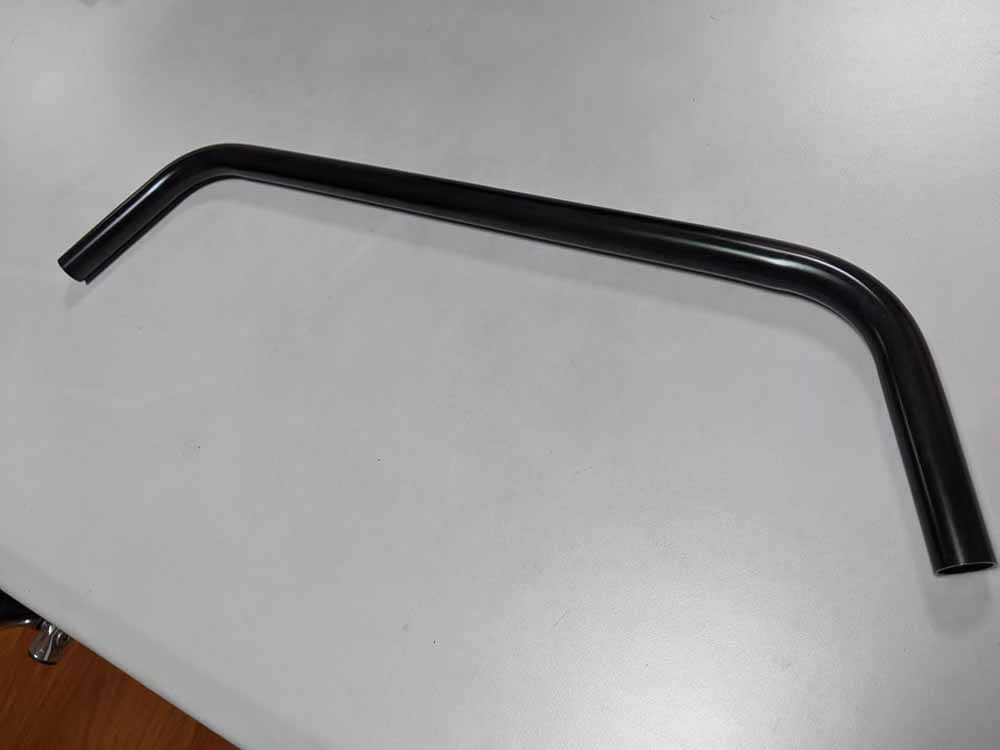
Bending Performance of Different Aluminum Tube Grades
Aluminum tubes have different grades, and different grades have different chemical compositions, which lead to different processing performances.
Aluminum Tube Grade
Series 1xxx: Common aluminum tube grades in the 1xxx series include, 1050, 1060, 1100, and 1200. This series aluminum alloy is 99% pure aluminum, it has very good ductility under the annealed condition and has very good corrosion resistance. This alloy is suitable for chemical equipment, stretched and spun components, and other general Fabrication.
Series 2xxx: Common aluminum tube grades in the 2xxx series include, 2011, 2014, and 2024. This series is aluminum-copper alloy, it has good machinability and cold-forming properties (under annealed condition), but its corrosion resistance is not very good, this is why when the customer needs to use 2xxx aluminum tube, it needs to be anodized. This alloy is suitable for aircraft structures, automotive parts, fasteners, machined parts, screw machine products, truck frames, and structural applications.
Series 3xxx: Common aluminum tube grades in the 3xxx series include, 3003, 3004, and 3105. This series is aluminum–manganese alloys, it has 1% manganese with good ductility, good corrosion resistance, and good formability. This alloy is suitable for architectural, cooking utensils, stretched and spun components, pressure vessels, and general fabrication.
Series 4xxx: Common aluminum tube grades in the 4xxx series include, 4043, 4047, 4032, and 4041. This series is aluminum-silicon alloys, it incorporates silicon elements, providing higher strength and excellent corrosion resistance. This alloy is suitable for manufacturing high-temperature, high-pressure structural components such as cylinder heads, automotive engine parts, and rocket fuel tanks.
Series 5xxx: Common aluminum tube grades in the 5xxx series include, 5052. This series is aluminum-magnesium alloys, it has very good corrosion resistance, high strength, high formability, and good weldability. This alloy is suitable for aircraft structures, boat building, cooking utensils, marine applications, pressure vessels, trailer frames, and general fabrication.
Series 6xxx: Common aluminum tube grades in the 6xxx series include, 6005, 6060, 6061, 6063, and 6082. This series is aluminum – magnesium – silicon alloys, it can be heat treated to achieve higher strength and better corrosion resistance. This alloy is suitable for aircraft structures, architecture, building products, boating buildings, chemical equipment, marine applications, piping, recreation equipment, truck frames, and general fabrication.
Series 7xxx: Common aluminum tube grades in the 7xxx series include, 7001 and 7075. This series is aluminum – zinc – magnesium and aluminum – zinc – copper alloys, it has very high strength, difficult to form. This alloy is suitable for aircraft structure, and outdoor and structure applications.
Heat Treatment of Aluminum Tube
In addition to the hardness of the aluminum tube itself, heat treatment of the aluminum tube can also increase its hardness and strength. The heat treatment method suitable for most aluminum alloys is T temper. They are:
T1 – Naturally aged after cooling from extrusion.
T2 – After extrusion, cold working, and aging under natural conditions.
T3 – Solution heat-treated, cold-worked, and naturally aged.
T4 – Solution heat-treated and naturally aged.
T5 – After cooling from the extrusion process, it is artificially aged.
T6 – Solution heat-treated and artificially aged.
T7 – Heat-treated to solution and then over-aged for stabilization.
T8 – Heat-treated to solution, followed by cold working, and then artificially aged.
T9 – Heat-treated to solution, followed by artificial aging, and then cold working.
T10 – Cold worked following cooling from extrusion and subsequently subjected to artificial aging.
The greater the hardness of the aluminum tube, the more difficult it is to bend. 1xxx aluminum tube, 3xxx aluminum tube, 5xxx aluminum tube, and 6xxx aluminum tube are relatively easy to bend because their strength is not that high. 2xxx aluminum tube, 4xxx aluminum tube, and 7xxx aluminum tube are hard to bend, due to their high strength. But, this does not mean they can not bend, you need to find the right tube bending machines.
As you can see, common heat treatment methods for aluminum tubes include natural aging and artificial aging. If you want to bend aluminum pipe, we suggest you bend them under natural aging conditions, from T1-T4. But, finding the proper pipe bending machine can help you to bend the high strength aluminum tube.
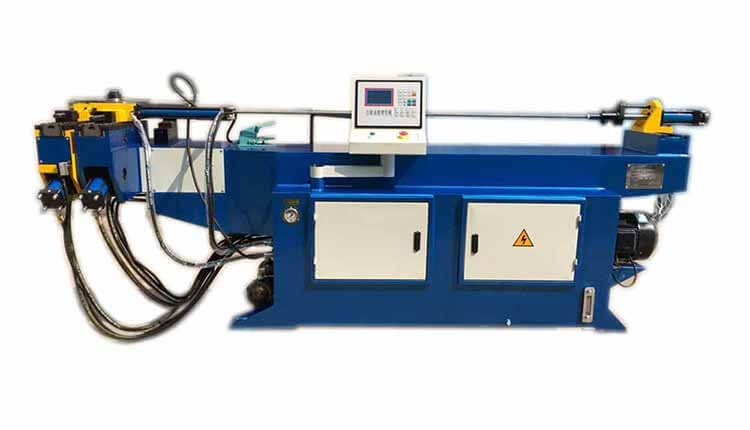
The Right Equipment for Aluminum Tube Bending
For different applications and different purposes of tube bending, you can choose different types of tube bending machine. But for industrial use and mass production needs, we suggest you choose the mandrel tube bender to meet your production needs. Here are some factors you need to consider:
Tube Size
The mandrel pipe bending machine is not a machine suitable for all pipe specifications. You need to choose the appropriate machine model according to the size of the tube, so as to ensure that the machine can ensure both bending efficiency and bending quality when bending aluminum tube.
Bending Accuracy
According to the production requirements for pipe bending accuracy, the pipe bending equipment you purchase must meet the bending accuracy requirements.
Bending Before Aging
The aging process increases the hardness of the aluminum tube. Therefore, if you need to bend the aluminum tube, we recommend aging it after bending to increase the hardness. Otherwise, it is very easy to cause the aluminum tube to crack.
Mandrel Size and Location
If the mandrel used for bending is too large, it not only fails to prevent wrinkling but also may cause bulging or even fracture of the bent aluminum tube. The positioning of the mandrel is also crucial. If it is positioned too far forward, the mandrel itself is also prone to breakage. More about mandrel bender and mandrel.
How to Bend Aluminum Tubing?
How to bend aluminum tubes depends on the technique or equipment used, and the choice of bending equipment also depends on your requirements for bending. You can consult our engineers or look at the common methods for bending aluminum tubes available on the market.
The Difference Between Aluminum Square Tube Bending and Aluminum Round Tube Bending
The biggest difference between bending aluminum round tube and bending aluminum square tubing is the mandrel shape, you should use multiple ball mandrels in a square shape instead of the round shape mandrel.
Surface Treatments for Bent Aluminum Tubing
If you want any surface treatment on the bent aluminum tubing, please notice that the surface treatment must be done after tube bending. The following are some common surface treatment methods for aluminum tubes.
Anodizing
Powder Coating
Paint Coating
Satin Finish
Sandblasting Finish
Electrophoretic Coating
Electroplating
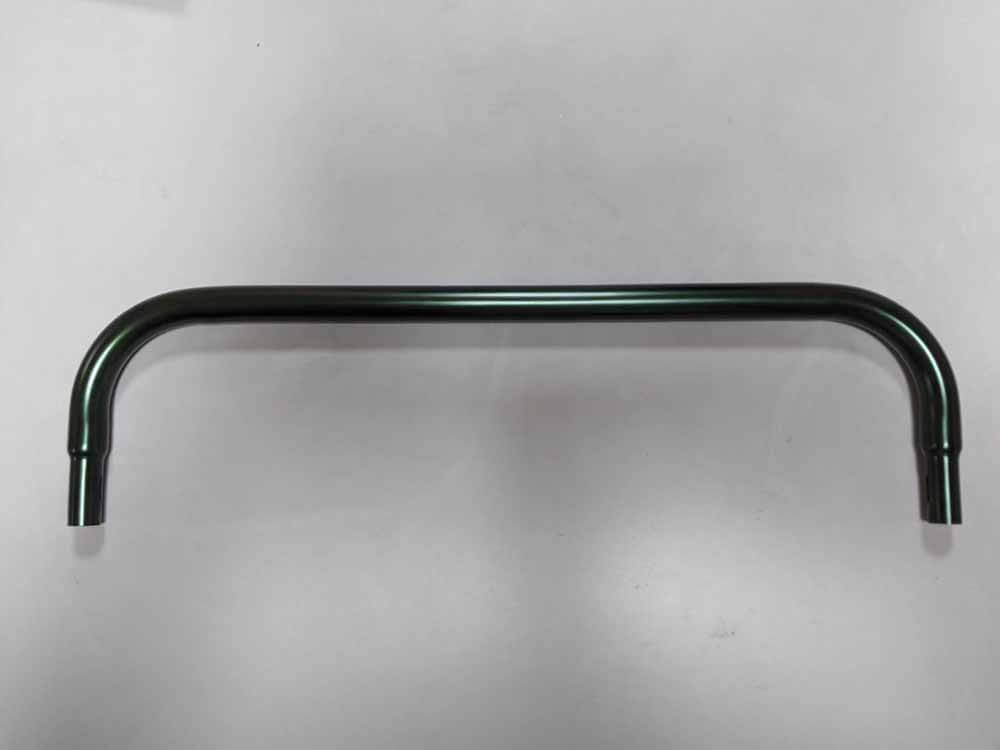
Key Considerations Before Bend Aluminum Tube
Before bending aluminum tube, you need to consider some factors, to optimize the final bending performance.
Material Choice
Depending on the tube bending equipment in your factory, you need to choose the appropriate aluminum tube grade and heat treatment, the material can’t be too hard to bend.
Tube Size
Is the wall thickness of the aluminum tube too thin, is the length of the aluminum tube too long, and is the size of the aluminum tube able to be bent on your company’s existing tube bending machine? Whether there are suitable mandrels and molds, etc.
Bend Radius
Determine the required bend radius, which depends on the diameter, wall thickness, and bend angle of the aluminum tube. Smaller bending radii may cause aluminum tubes to deform or crack.
Bend Angle
Determine the required bend angle and whether a single bend or multiple bends are required. Larger bend angles may require larger bend radii.
Bending Process
According to different bending requests, choose the appropriate bending technique.
Common Issues When Bend Aluminum Tube
When bending aluminum tubes, you may meet some issues. Here are some common problems you may face and their solutions.
Bending Deformation Failure
Poor bending deformation is typically caused by excessive stress during the bending process, exceeding the bending limit of the aluminum tube. Additionally, it may result from improper design or manufacture of the bending die. This issue can be addressed by optimizing the bending process and improving the design of the bending die.
Thinning of the Tube Wall Thickness
The thinning of the tube wall thickness is mainly due to excessive tensile stress during the bending process, resulting in a phenomenon known as ‘flattening’ of the aluminum tube wall. Additionally, the thickness of the tube wall may vary due to differences in the initial thickness of the aluminum tube material and the bending curvature. This issue can be addressed by adjusting the thickness of the aluminum tube material and the bending curvature.
Wrinkling of the Tube Wall
The wrinkling of the tube wall is mainly caused by sliding of the wall surface during bending or excessive wear of the bending die. This issue can be addressed by optimizing die surface treatment, adding support devices, adjusting bending speed, and other methods.
Cracking or Fracturing of the Aluminum Tube
The selected aluminum tube material is inappropriate and has poor tensile properties. Then you need to choose the right aluminum tube material for bending.
The chosen aluminum tube has a too-thin wall and weak bearing capacity. You need to choose a wall thickness that can withstand the stresses of bending and twisting of aluminum tubes.
The bending speed is too fast, causing a large load on the aluminum tube, and causing deformation or breakage. The solution to this problem is to find a mechanical engineer to readjust the bending parameters.
The Application of Bent Aluminum Tubing
The purpose of bending aluminum tubes is to meet the specific design and functional requirements of various industries. Let’s take a look at some of the application areas where bent aluminum tubes are widely used.
Automotive
Due to aluminum tubes being lightweight, corrosion-resistant, and high-temperature resistance, the bent aluminum tubing can be used for making exhaust systems, air intake systems, and roll cages.
Aerospace
Due to the aluminum tube is high strength-to-weight ratio and can withstand extreme conditions, the bent aluminum tubing can be used for making aircraft structures, hydraulic systems, and fuel lines.
Construction
Due to the aluminum pipes are beautiful, durable, and corrosion-resistant, so the bent aluminum tubing can be used for making handrails, balustrades, architectural features, and curtain walls.
Furniture
Due to aluminum tubes are lightweight, modern-looking, and easy to manufacture, so the bent aluminum tubing can be used for making chairs, tables, and shelving units.
Sports and Recreation
Due to the lightweight and strength properties of aluminum tubes, bent aluminum tubes can be used for making bicycle frames, ski poles, and tent poles.
Medical
Due to the aluminum tubes are lightweight, durable, and easy to sterilize, so the bent aluminum tubing can be used for making medical equipment, hospital beds, and mobility aids.
Industrial
Due to the aluminum tubes have good corrosion resistance, high strength, and are easy to process, the bent aluminum tubes can be used for making conveyor systems, piping, and material handling equipment.
Are you also working in the aluminum tubing or aluminum profile processing industry? Or you are looking for the equipment for aluminum tube bending? TubeBenderN is a professional manufacturer of aluminum tube bender in China, we can customize the precise aluminum tube bending machine to meet your production needs.
You may also interested in:
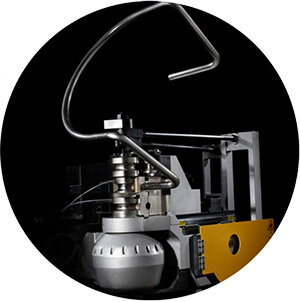
Denis Lau
Denis Lau has 20 years of work experience in the metal processing industry. His major in university was mechanical engineering, and after graduation, he started from the bottom of the workshop, gaining extensive hands-on professional experience and the ability to tackle challenges from various industries.
